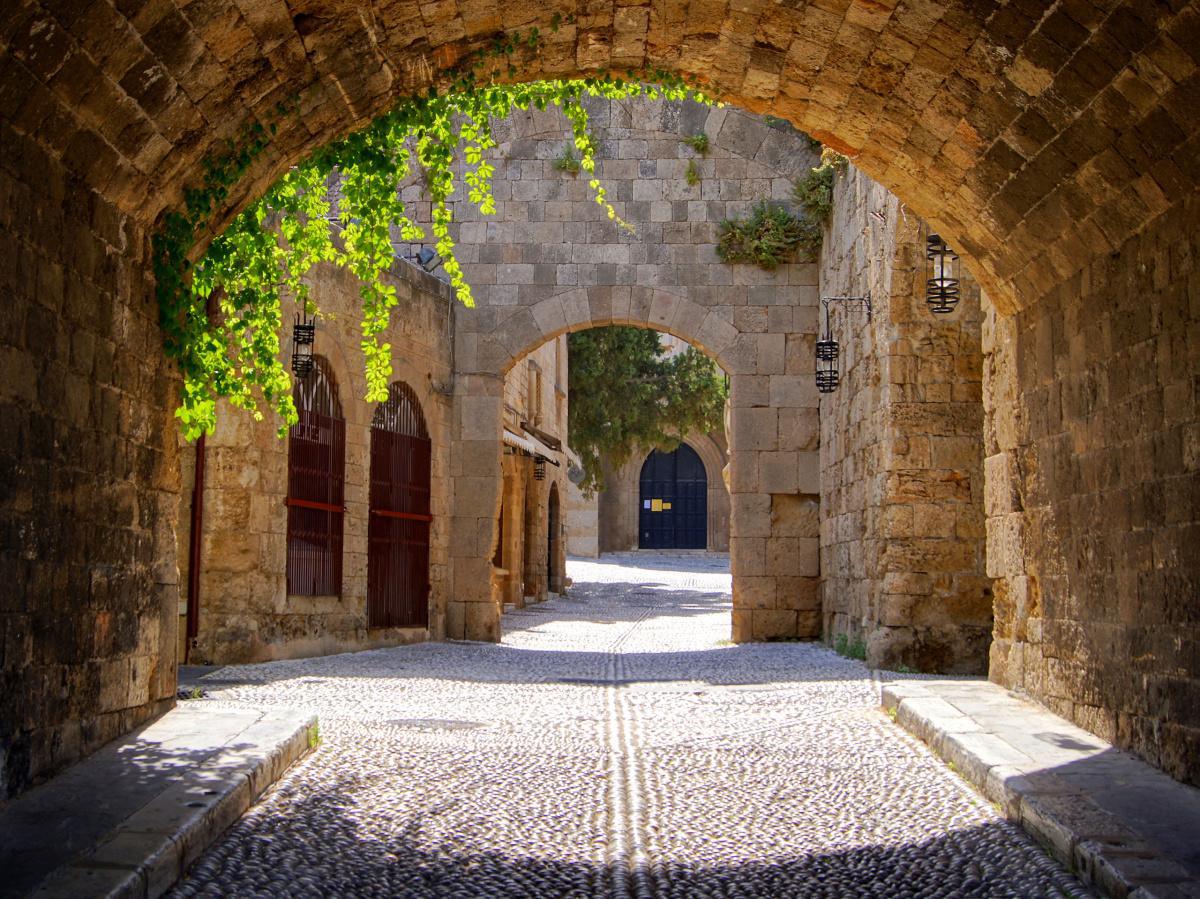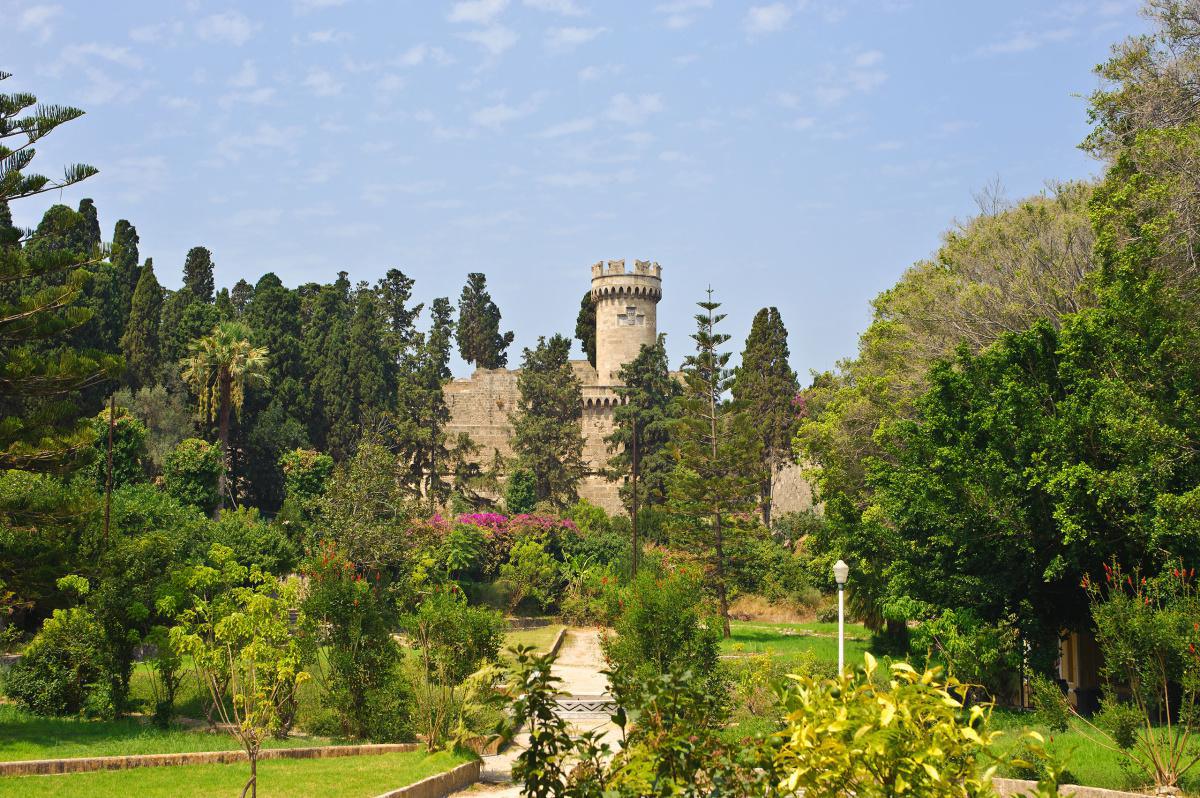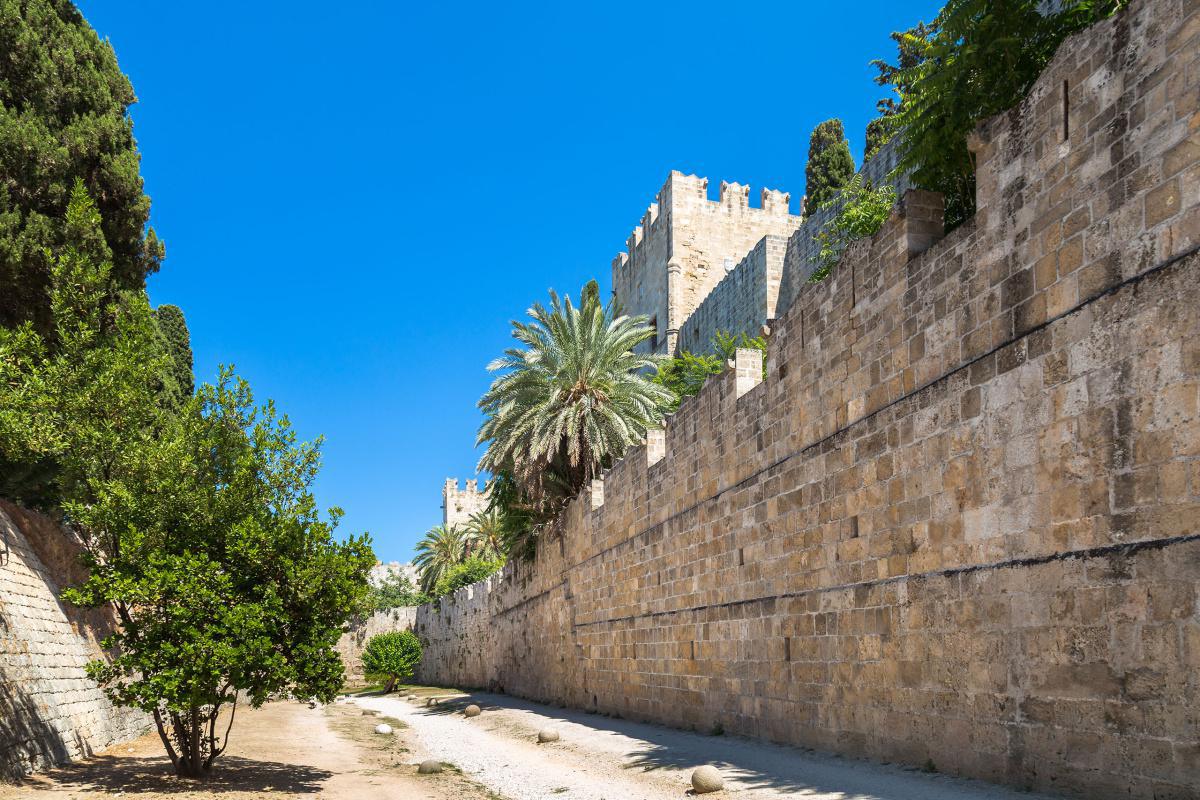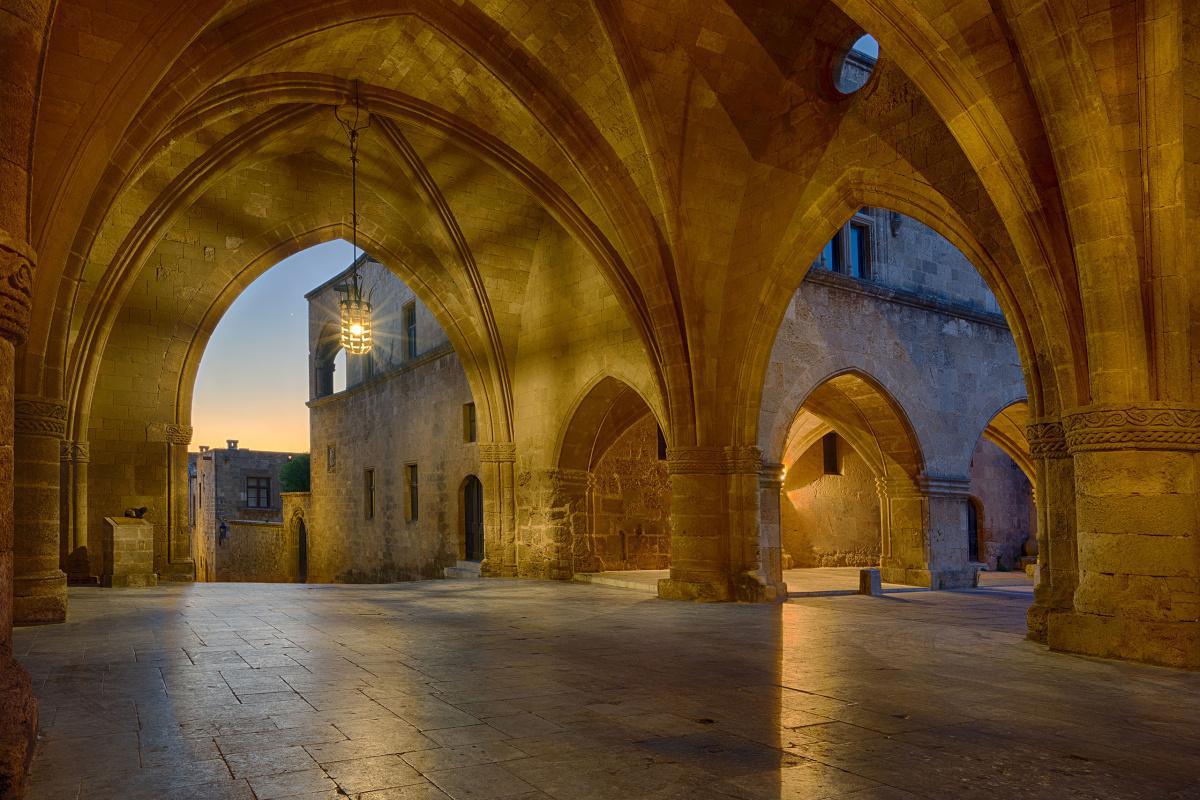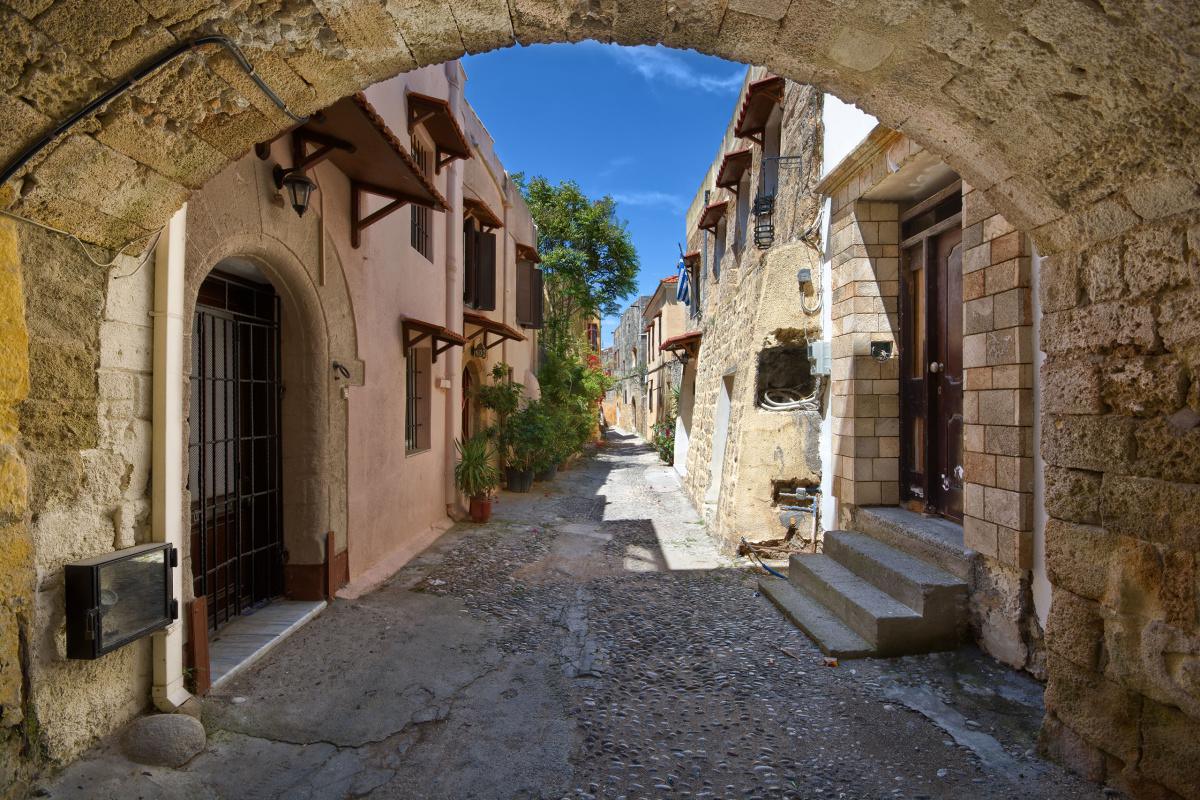Comments
Rhodes Old Town
4-14 Solomou Alchadef Rodos
THE MEDIEVAL TOWN ~ A World Heritage Site
The earlier Byzantine city was extended, and the walls fortified, by the Knights of Saint John in the 14th and 15th centuries, creating the medieval city of Rhodes we see today.
Eleven gates lead to the interior which is, in turn, divided into two sectors: the “Collachium”, where the Knights lived and where the most important Knights’ houses are still to be found, and the “Burgh”, the main city.
The Old Town, as the locals call it, is today one of the best preserved fortified medieval towns and is included in UNESCO’s list of World Heritage Sites. By walking the cobbled streets, the visitor can admire the magnificent buildings of the Knights, the moat and walls with their ramparts, the Byzantine churches and the mosques, the squares, the gardens and the courtyards of the houses.
The feeling is very much as though the clock has stopped somewhere in the past, but, at the same time, the visitor discovers that this unique complex is a vibrant town, full of surprises, and just crying out for exploration.
A walk in the Medieval Town
Rarely does one have the chance to stroll into twenty-four centuries of history and countless previous centuries of human presence, all within medieval walls, which surround 58.37 hectares of land. Even more rarely is one able to spend time in such a fabulous place, where, today, 2.500 inhabitants still share an amazing palette of multicultural influences.
Such a place is the Medieval Town of Rhodes, a functional part of the modern city of Rhodes, which was inscribed on the UNESCO World Heritage List in 1988.
Strolling into the largest living medieval town in Europe
Cultures and time periods alternate with fascinating diversity as you enter the Old Town of Rhodes through the Gate of Freedom. Medieval fortress-like buildings, narrow alleys, minarets, old houses with their balconies, decorative, drinking or ablution fountains, tranquil or busy squares with shady trees, all contribute to creating an atmosphere of the past.
A walk along the old city walls is an excellent way to appreciate this tremendous achievement in fortification and enjoy a superb overview of the old town. The walk passes along the “Curtains” or bastions, the walls and the gates. From the walls one can admire the Medieval moat, which has been magnificently restored as a walking area and is the site of the “Melina Merkouri” theater that hosts the Rhodes Summer Festival with concerts and performances by outstanding Greek and International artists.
The cobblestone Street of the Knights, one of the best-preserved medieval streets in existence, is flanked by medieval Inns of the various “tongues” of the countries represented in the Order of the Knights of St John. At the foot of the Street, in Museum square, stands the Hospital of the Knights, which houses the Archaeological Museum.
Across the square is the Church of Our Lady of the Castle. It was the Orthodox Cathedral of Rhodes in Byzantine times dating back to at least the 11th Century, becoming the Catholic Cathedral when the Knights occupied the City.
The Byzantine Monastery of Saint George
The Church of Our Lady of the Bourg
The Suleiman Mosque
The Archeological Museum
Palace of the Grand Master
The Moat
The famous Street of the Knights (Ippoton) the most important and imposing street in the Collachium, leading to the Grand Master’s Palace.
On either side are the former residencies of the various nationalities (“tongues”) of the Order of the Knights.
The Street of the Knights is the main route from the port to the 14th century Palace of the Grand Master. The Palace, originally a Byzantine fortress built at the end of the 7th century A.D., was converted in the early 14th century by the Knights of the order of Saint John into the residence of the Grand Master of the order as well as the administrative headquarters of the state of the Knights.
| The Palace was destroyed in 1856, by an explosion of dynamite stored under the Knights’ church of St. John, located opposite the Palace. It was rebuilt during the Italian occupation, in the late 1930s, to serve as the residence of the Italian Governor. The rooms on the ground floor, house two large permanent exhibitions, with the theme “The city of Rhodes” the first from its founding in 408 B.C. until the Roman Empire and the second from the 4th century A.D. until the Ottoman occupation (1522). The exhibits are presented in thematic units (early Christian and Paleo-Christian years, economy, daily life, defence and administration), while maps and audiovisual material provide the visitor with a strong image of the island’s history from antiquity to the middle ages. |
|
The courtyard of the Palace is the venue of many Greek and international cultural events ofhigh artistic caliber. Leaving the “Collachium” with its austere facades, one enters Polidorou Street which leads to a square with outdoor cafes and restaurants, where the scenery changes dramatically. Moving on, one enters Sokratous Street, the main thoroughfare of the Medieval Town, always buzzing with life, with its cafes and shops. Sokratous Street leads down from the Mosque of Suleiman the Magnificent towards the harbor.
The present mosque was erected in 1808 on the site of a previous one built by Suleiman the Magnificent in the early 16th century. South of Sokratous Street, scattered in a tortuous network of narrow lanes, many small hotels and pensions offer an alternative to the large, luxury hotels of the modern city.
The Burgum, as this area is called, shows an equally fascinating face at night. Diverting to Arionos Square, one may wish to visit the Mustafa Pasha Mosque and the “Yeni Hammam” (Turkish Baths), built in the 16th century. These were the second baths the Ottomans erected in Rhodes.
That is why they were called Yeni Hamam (New Baths). As if by a mysterious force, one will be drawn, time and again, to walk by the cobblestone Street of the Knights, feeling like a pilgrim of the Medieval Ages, happily sojourning on the island of the Sun.
The Medieval Town of Rhodes is a mosaic of different cultures and civilizations, the uniqueness of which one cannot fully understand just by reading these lines. It is a “living” city, forever young, overcoming time to look ahead towards the future, more beautiful than ever.

